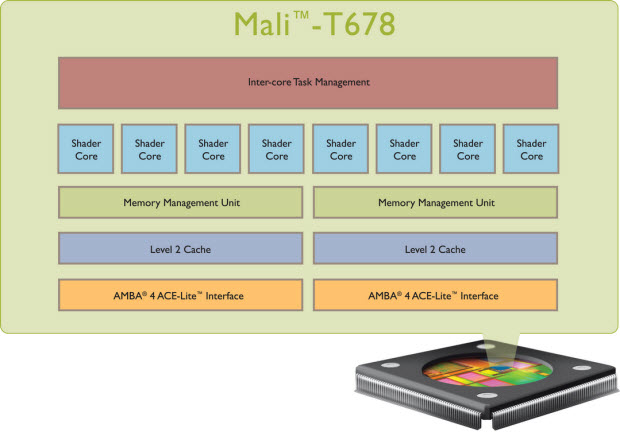ASTC allows developers to take advantage of texture compression in aplications and to chose one codec for all compressions needs. It is part of the Khronos, group dedicated to creating open standard APIs to enable the authoring and playback of rich media and wide variety of platforms and devices, and ARM hopes it will become the favourite compression codec for developers.
Pete Hutton, ARM's general manager for media processing stated: “People expect higher standards of visual computing on their smartphones, tablets and smart-TVs with seamless access to their digital world and personal content, GPU compute enables this as it increases the range of functions mobile devices can perform within the available battery life. ARM continues to focus on system-wide optimization by integrating market leading CPU and GPU technologies to drive both high performance and energy-efficiency”.
The Mali T624 scales from 1-4 cores and Mali T628 from 1-8 cores. The scalability of the core count gives the opportunity to choose how many cores will be in use based on required performance. It is incredibly flexible and suitable for wide range of applications. Mali T628 offers up to ten times better graphic performance than Mali 400-MP GPU that is found in Samsung’s Galaxy S III, and the Mali T678 gives a 50% performance improvement over the first generation Mali T658.
[Ed – It would be nice to know what the performance comparison is to other products from Qualcomm, Imagination etc. However with the 50% improvement we are guessing that the Mali might still be behind the others in terms of raw performance. We will have to wait until they hit the market to be sure though]
Discuss this in our Forum




